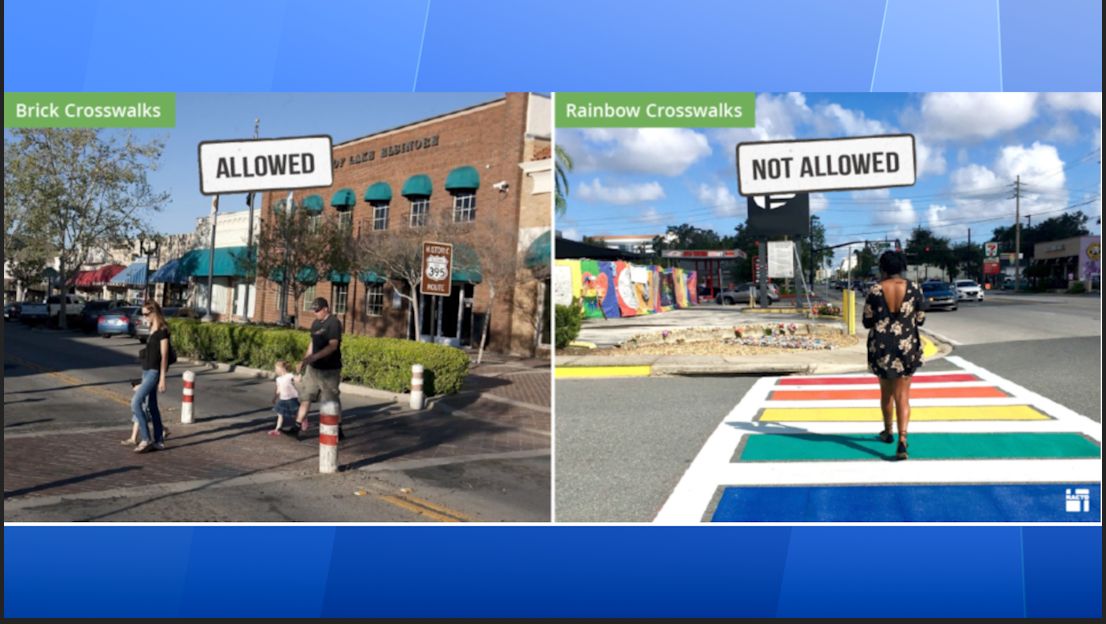HILLSBOROUGH COUNTY, Fla. — The Federal Highway Administration is in the process of updating the Manual on Uniform Traffic Control Devices.
The document dictates what all streets and signs in America look like.
Despite the upcoming update, pedestrian and disabled advocates have concerns about modernizing the federal standards — many of which have been in place since it was first published in 1935.
What You Need To Know
- 11th edition of Manual on Uniform Traffic Control Devices slated for December
- The federal document dictates what all streets and signs in America look like
- MUTCD was first published in 1935, rewritten in 1971, amended in 2009
- Advocates want overhaul of MUTCD because they say it has no consideration for non-automotive users (bicyclists & disabled) of streets and highways
Advocates are critical of the latest version because they say it has no consideration for non-automotive users of streets and highways.
Road users like bicyclists, pedestrians and those with disabilities say they feel unprotected.
"I have a condition called spina bifada, and for mobility, I just use a wheelchair to get around," said Scarlett Lawhorne.
Scarlett also drives to get to her destinations. She notes how vulnerable she feels outside of her car versus being behind the driver seat.
"There are going to be times that people [drivers] are not looking," she adds.
There is a push for equity when it comes to updating the MUTCD that regulates how and when traffic control devices, signs, markings and other road/highway treatments are placed and designed.
The last update happened 11 years ago. Despite the forthcoming update, some say the document has a long way to go before it is modernized.
"I do wish that sometimes for the more busier streets, the crosswalk timer was longer," said Scarlett. "To make sure everybody has time to get across."
That is just one recommendation of the more than 650 proposed changes submitted during the public comment period.
The last major re-write of the MUTCD was in 1971. It was amended in 2009.
HILLSBOROUGH METROPOLITAN PLANNING ORGANIZATION WIEGHS IN ON MUTCD
Hillsborough County's Metropolitan Planning Organization discussed how restrictive the manual is concerning crosswalks.
Rainbow and Pride crosswalks are showing up everywhere including in Orlando and Saint Petersburg. However, for safety precautions, colored crosswalks are discouraged according to the MUTCD.
The manual states, "patterns or colors that degrade the contrast of the white transverse pavement markings establishing the crosswalk are to be avoided."
"The fact that they're [Federal Highway Administration] not using science and data, but just I don't know — coming up with it out of whatever," a Hillsborough MPO Board member said the FHWA's stance on rainbow cross-walks as a safety hazard is ambiguous.

PROTECTING THE VULNERABLE, PROVIDING INDEPENDENCE
According to the National Association of City Transportation Officials, 35,000 people die in traffic accidents in America per year. That count doubles the average in Canada.
"When I go out, I always have to have someone with me because I don't know what I'm going to encounter," said Paulina Reyes who uses a wheelchair.
NACTO encourages equitable updates to the manual, not just for safety, but to provide independence for those like Reyes who do feel vulnerable while using streets & highways.
The 11th edition of the Manual of Uniform Traffic Control Devices is scheduled to come out December 2021.



